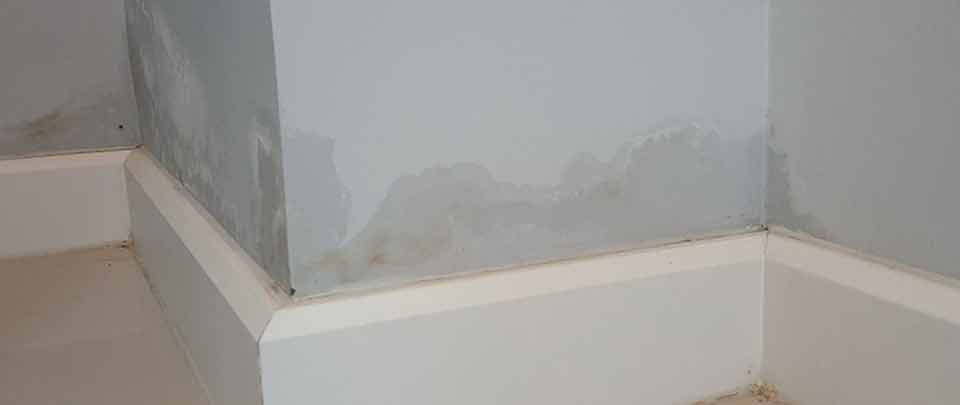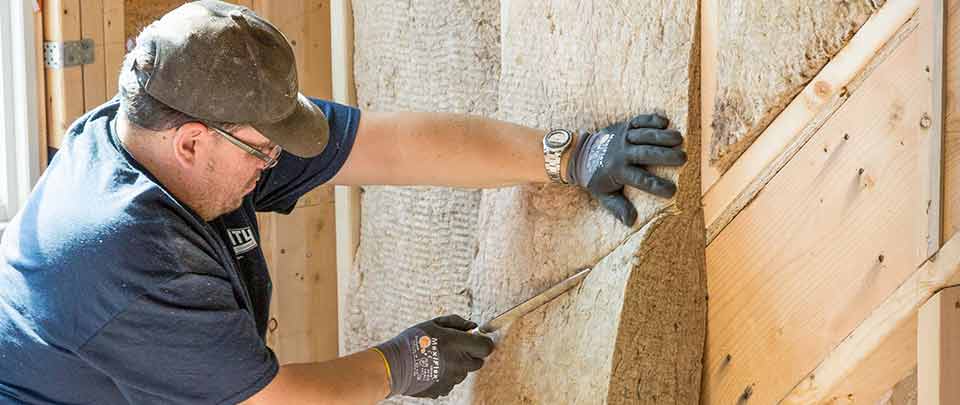
Why Am I Getting Condensation Behind My Insulation on the Outside Wall?
Finding moisture behind the insulation of your walls is an understandably concerning event. Most property owners are aware of the significant damage that even a little water can do to a building, so it makes sense that you’d be upset to find some in your walls, but what causes this to happen? Well, though the reasons it can happen may vary, the basic cause of condensation on insulation in your walls is the warm, moist air from inside your property meeting the cold surfaces that interface with the outside of the building. The rapid cooling of the warm air causes it to condense, and the moisture in that air becomes water. Warm air meeting cold surfaces is the root cause of most condensation problems; there is little you can do to prevent that. But you can prevent the warm air from getting to those cold surfaces in the first place.
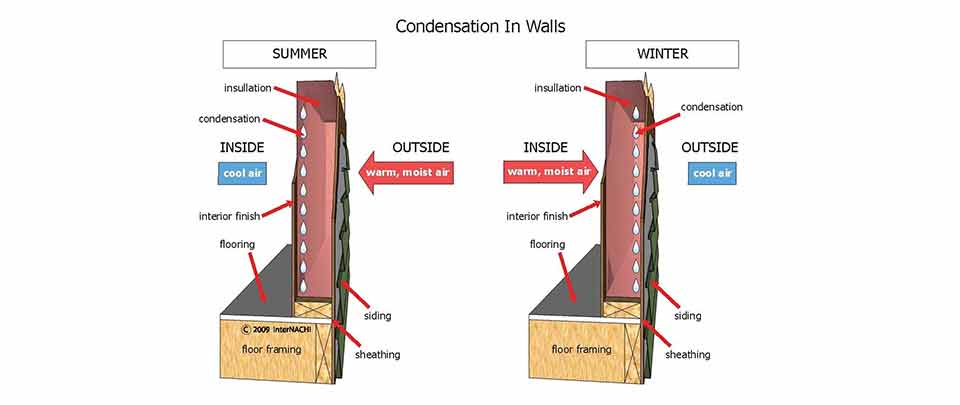
Check for Damage
You will never be able to make your walls completely airtight—nor should you—but having large cracks or holes in the outside of your wall can allow moisture a more direct route into your wall cavities. In other words, it will let the rain in.
Your first port of call should be to make sure there is no damage to the outside of your property that might be letting rain get into the wall cavities. Then you can start looking at more subtle areas, such as your windows. If the seal around your windows is not up to scratch, moisture could be seeping in that way. In extreme cases, you may need to have new windows installed.
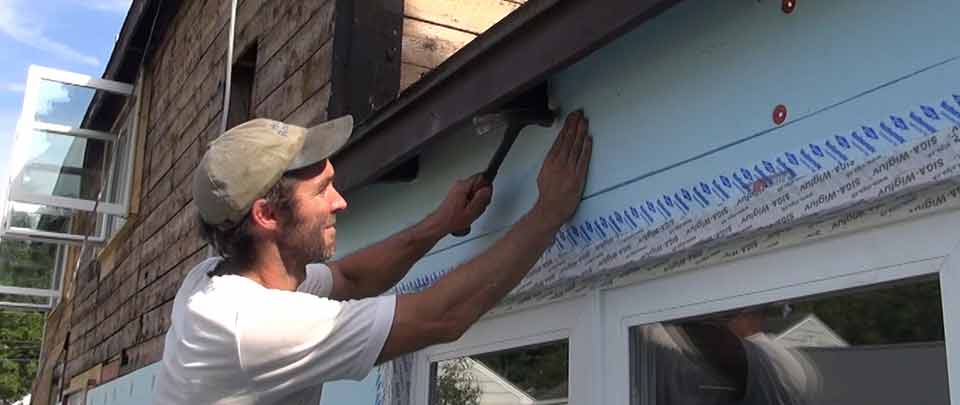
Reduce the Moisture in Your Property
The next thing you can look into is bringing the amount of humidity inside the building down. It is the moisture in that internal, warm air that condenses into water, so reducing the moisture will reduce the amount of condensation that can form in your walls.
The natural goto solution for this would be dehumidifiers. We would certainly recommend installing one or two if you are facing this kind of problem, but you should bear in mind that these alone will be unlikely to solve your problem. That is unless you spend a lot of money on dehumidifiers and essentially turn your home into desert-like conditions.
Your best bet is to use your dehumidifiers in conjunction with other behaviors, such as remembering to switch on the extraction fan when you are taking a shower or boiling water. Having adequate ventilation is also an excellent way to combat humidity (assuming you do not live an overly humid region) as it will ensure that the warmer, humid air is whisked away before it has a chance to condense.
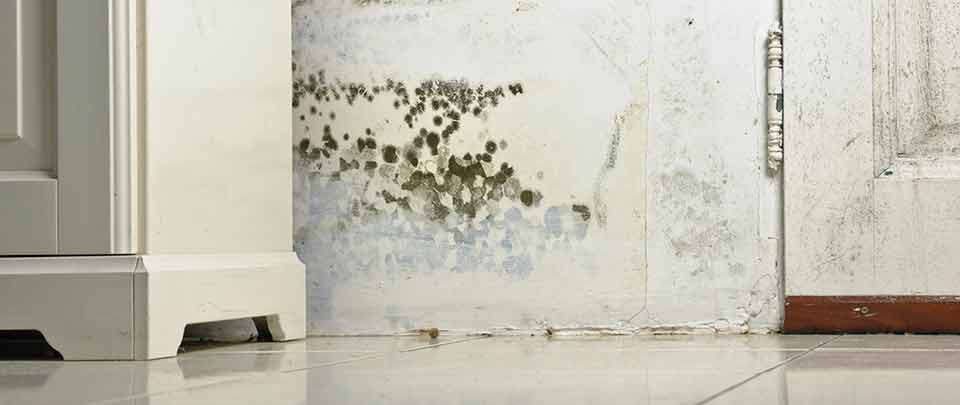
Even Out Your Temperatures
Another thing that can help to reduce condensation is ensuring your home is evenly heated and evenly insulated. Condensation forms when warm air encounters cold surfaces, with larger temperature differences making for more likelihood of condensation.
If you make sure your house has a few “hot spots” as possible, and your outer wall develops as few “cold spots” as possible, you mitigate this. Hot spots typically occur because your heating is concentrated in specific areas, which can happen if you have a small number of heat sources in your property, and they are having to work harder to heat the internal volume.
Similarly, having areas where there is less insulation to keep the external cold at bay can result in colder spots in certain areas. Addressing both of these problems will reduce the likelihood of condensation developing.

Long Term Solutions
Naturally, you’ll be interested in finding longer-term solutions to this kind of problem. As you might expect, more robust solutions can be more disruptive. For example, installing a vapor barrier in your walls (assuming you don’t already have some) will help to keep moisture from reaching the areas where it might condense.
Perhaps the most effective solution, however, is adequate ventilation. If you have a roof void—an attic, for example—there should be roof ventilation already. If not, you will need to consult a specialist to see what your options are. Roof ventilation works because heat rises, so all that warm, moist air heads straight up. Eventually, it encounters your roof, which will be cold from the outside. It is here where most of the condensation takes place, and the water that emerges from this condensation can then run down the roof and into the walls. By ensuring your roof is properly ventilated, you will take care of the main source of condensation in your property.
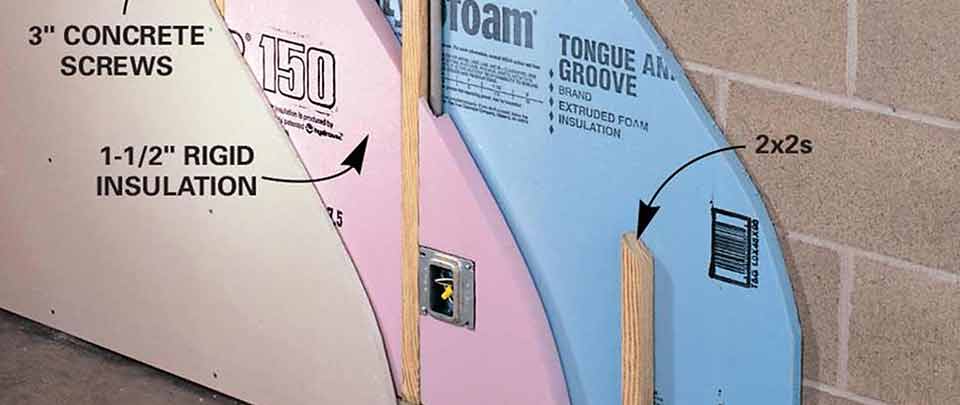
What Damage Can Condensation Do?
The most obvious problem condensation creates is damp. Having moisture inside your walls will inevitably lead to damp, which is both unsightly and destructive. It can damage the finish on your walls, cause the material to rot, and be a breeding ground for mold and algae.
A less obvious effect, however, is what that moisture can do to your insulation. Many types of insulation react very poorly to moisture, losing their insulative properties. In some cases, the insulation can be dried out and re-used; however, the process of getting that insulation out, drying it, and reinstalling it is so involved that it is probably worth your time just to install new installation at that point. It is also the case that some insulation is irreversibly destroyed by moisture, leaving you with no choice but to replace it.
Final Thoughts
Finding condensation on insulation around your exterior walls can be a stressful experience, but it needn’t be one that ruins your year. Be sure to check all of the things we mentioned above, paying particular attention to your heating and ventilation. If you have damage to the outside of your property, be sure to get that repaired.
And, remember, if you don’t have a condensation problem but you have noticed your heating is uneven, your house is poorly ventilated, or there is damage to the outside faces of the building; it is often far easier to prevent a problem than it is to fix it after the fact.
